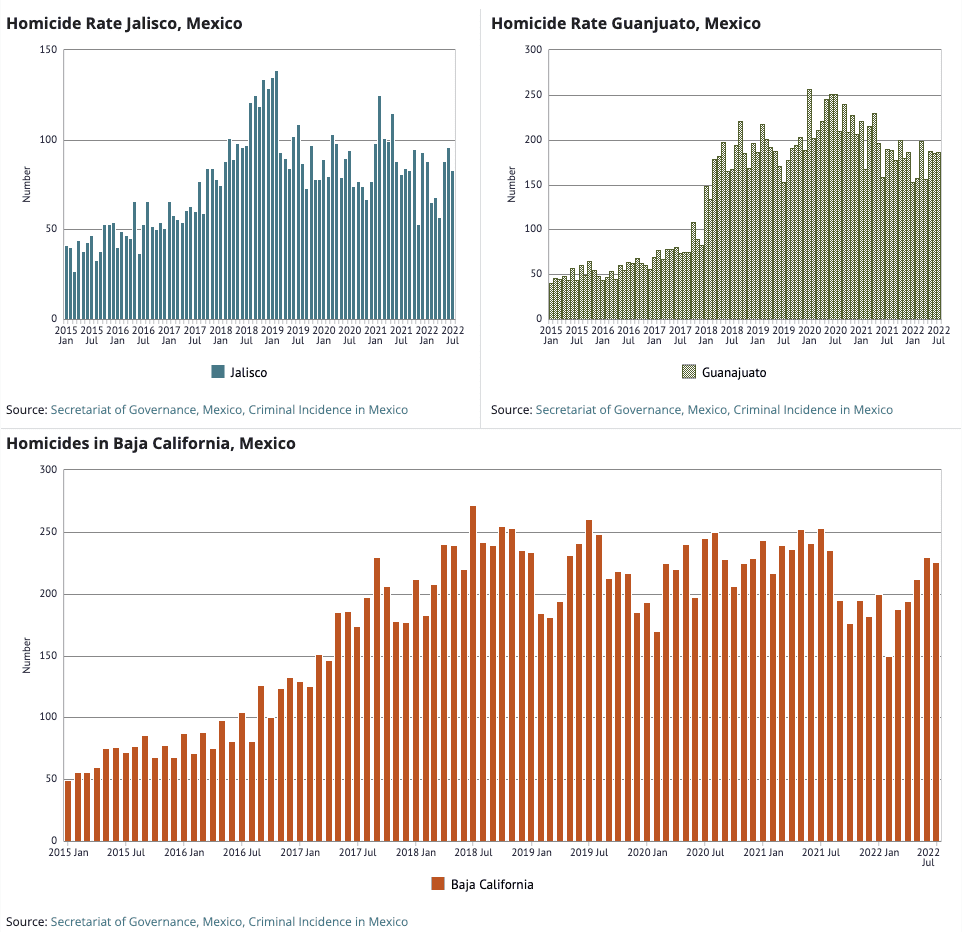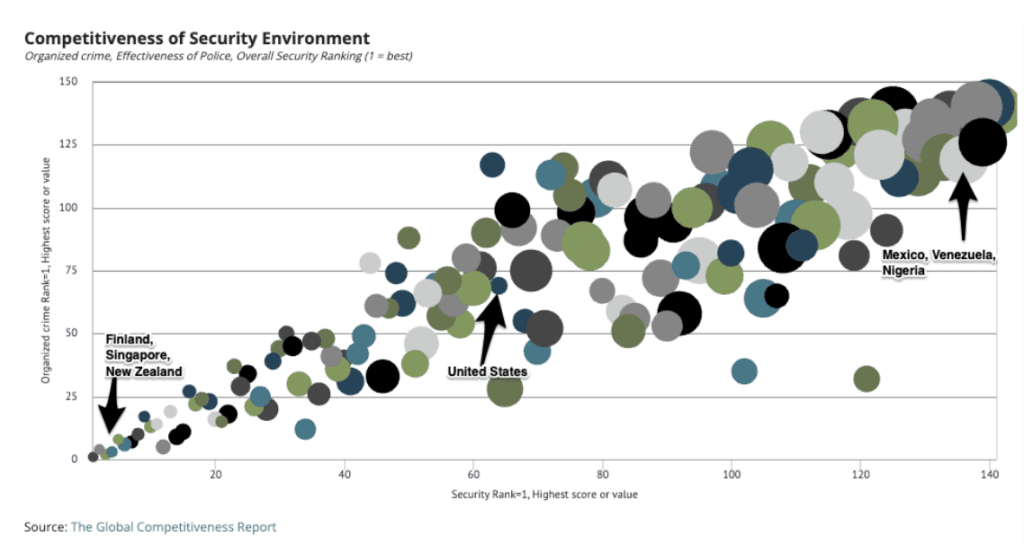OUR DATA PORTAL Emergent RiskIQ Login
Coordinated Cartel Violence in Mexico

August 2022: Coordinated multi-state violence portends an uncertain security environment, with cartels acting out to dispel perceptions of fragmentation and weakness.
Why it Matters
Intense violence that targeted civilians and businesses across three states in northern Mexico from August 9-13 has temporarily abated, but the scale and scope of the coordinated violence across three states by the Jalisco New Generation Cartel (CJNG) highlight a willingness to go to new extremes to portray the extent of their power and control. The multi-day surge in violence – which included CJNG setting fire to approximately 30 businesses in Jalisco and Guanajuato – was likely linked to police attempts to capture mid-level leaders of the CJNG in Jalisco. While retaliatory cartel violence following arrests is common in Mexico, this escalation extended beyond past patterns to include several regional cells in Baja California, Jalisco, Guanajuato and Chihuahua responding seemingly simultaneously to arrests that did not immediately impact their areas of operation. The government recorded 341 people killed during the multi-day wave of violence in August. Unrest in Tijuana lasted several days, with cartel-led urban roadblocks, vehicle arsons, and 17 other coordinated attacks that resulted in the state’s governor declaring a shelter-in-place and curfew – all occurring in alleged solidarity with an arrest more than 1,550 miles and several states away. Following the events in early August, the Mexican Chamber of Commerce warned on August 10 that recent organized crime activity is putting local businesses at even greater risk, noting that cartels set fire to more than two dozen storefronts.

CJNG’s pattern of behavior indicates that bold and dramatic displays of violence are a key tool of its operations and are likely to emerge again in retaliation for government action. In the past, CJNG has created dramatic videos on social media featuring its military-style weaponry, vehicles and fighters to further the public narrative of its strength – which has included attacking and kidnapping members of the security forces. Experts contrast CJNG to the behind-the-scenes and often less publicly violent approach of the Sinaloa Cartel and note that CJNG and Sinaloa competition is fueling violence, especially as CJNG aggressively pushes into new territories to catch up to or displace Sinaloa – a competition that extends beyond Mexico into Latin American countries such as Colombia and Guatemala as well as Europe and the Asia-Pacific region.
Indicators and Warnings
Mass cartel violence threatens the long-term status-quo for businesses operating in Mexico. If cartels elect to leverage coordinated multi-state violence against the public and government, assessing local security conditions will become more challenging for businesses – presenting additional risk to travel security, logistics and operations. Not all cartels will mirror CJNG’s penchant for violence however, it is now reasonable to expect that some will attempt cross-state violence when provoked or perceived as necessary to portray strength and power, especially as inter-cartel rivalries continue.

Under-resourced security will remain at a disadvantage in addressing the evolving cartel landscape. As cartel groups expand the Mexican government will continue to struggle to combat cartel violence and public narratives of the weak state. With an average of less than one police officer per 1,000 people, Mexico is below the international minimum standard of 1.8 police officers per 1,000 people, according to a study by the Secretariado Ejecutivo del Sistema Nacional de Seguridad Pública (SESNSP). Failure to address this challenge along with deep corruption within the police services will challenge business dealings and expansion of US-Mexico cooperation in the coming decades.
Sign up for our Newsletter
ERI has offices in the United States, Singapore, the United Kingdom and Ireland. Want to know more?
